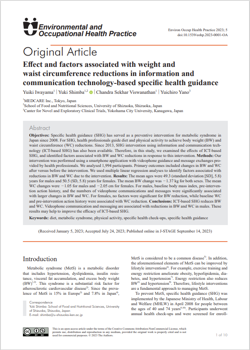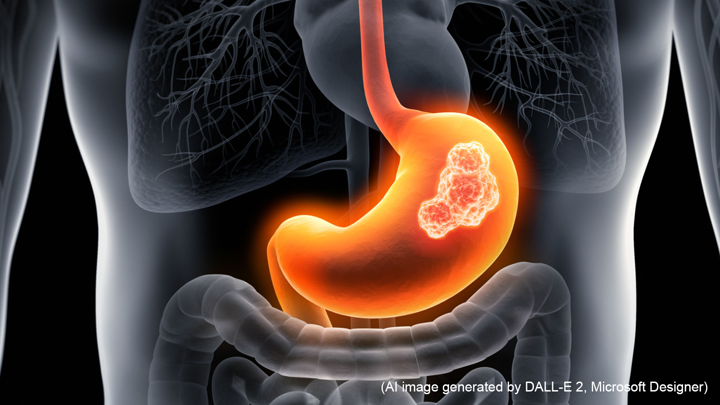#E0065 Can information and communication technology help reduce weight and waist circumference?

Can information and communication technology help reduce weight and waist circumference?
Obesity is the most important cause of atherosclerotic cardiovascular disease, especially when associated with high blood pressure, elevated blood glucose, and excess abdominal fat—known as metabolic syndrome, which accounts for 7.8% of the Japanese population.
Transitioning from a sedentary lifestyle to a more active one through regular exercise and controlling one’s diet leads to a decrease in weight, abdominal fat, blood pressure, and blood glucose. To encourage this positive shift, the Japanese Ministry of Health, Labour and Welfare has implemented specific health guidance (SHG) for people between the age group of 40 and 74 years.
Participants underwent annual health check-ups, were screened for the SHG program for 3–6 months, and received dietary and physical activity guidance from health professionals. This guidance provided utilized information and communication technology (ICT) such as videophones and messaging applications.
The intervention conducted by MEDCARE Inc. (Tokyo, Japan) involved the SHG participants downloading “Medically“ the health guidance application onto their smartphones. The application, featuring messaging and videophone functions, required participants to register their personal information.
The guidance had various forms including initial guidance for those with increased body weight (BW) and waist circumference (WC) and intensive guidance for those with high risk factors such as high blood pressure, elevated blood glucose and fats, and smoking.
In the initial 30 minutes’ videophone session of the app, health professionals provided guidance on diet, physical activity, and smoking cessation. Subsequent guidance delivered through videophone or app message (at least four sessions of 10 minutes each), assessed goal achievement and provided additional advice. The final guidance conducted via videophone or app message (≥10 min) helped evaluate the degree of success in achieving goals and offer further guidance.
After six months of ICT-based interventions with SHG, a reduction in body weight and waist circumference was observed among all 1994 participants in both the genders.
Overall, the findings provide insights for improving SHG intervention strategies and addressing the clinical risks associated with metabolic syndrome. Individuals in the action stage generally adopt a healthier lifestyle, with reduced fat intake, higher vegetable and fruit intake, and increased physical activity. While females are reported to be more health-conscious and exhibit healthier eating habits compared to males; they also demonstrate a greater interest in lifestyle changes and display higher motivational variables.

Link to the original journal article:
https://www.jstage.jst.go.jp/article/eohp/5/1/5_2023-0001-OA/_article
Title of the paper:
Effect and factors associated with weight and waist circumference reductions in information and communication technology-based specific health guidance
Authors:
Yuiki Iwayama, Yuki Shimba, Chandra Sekhar Viswanathan, Yuichiro Yanoe




